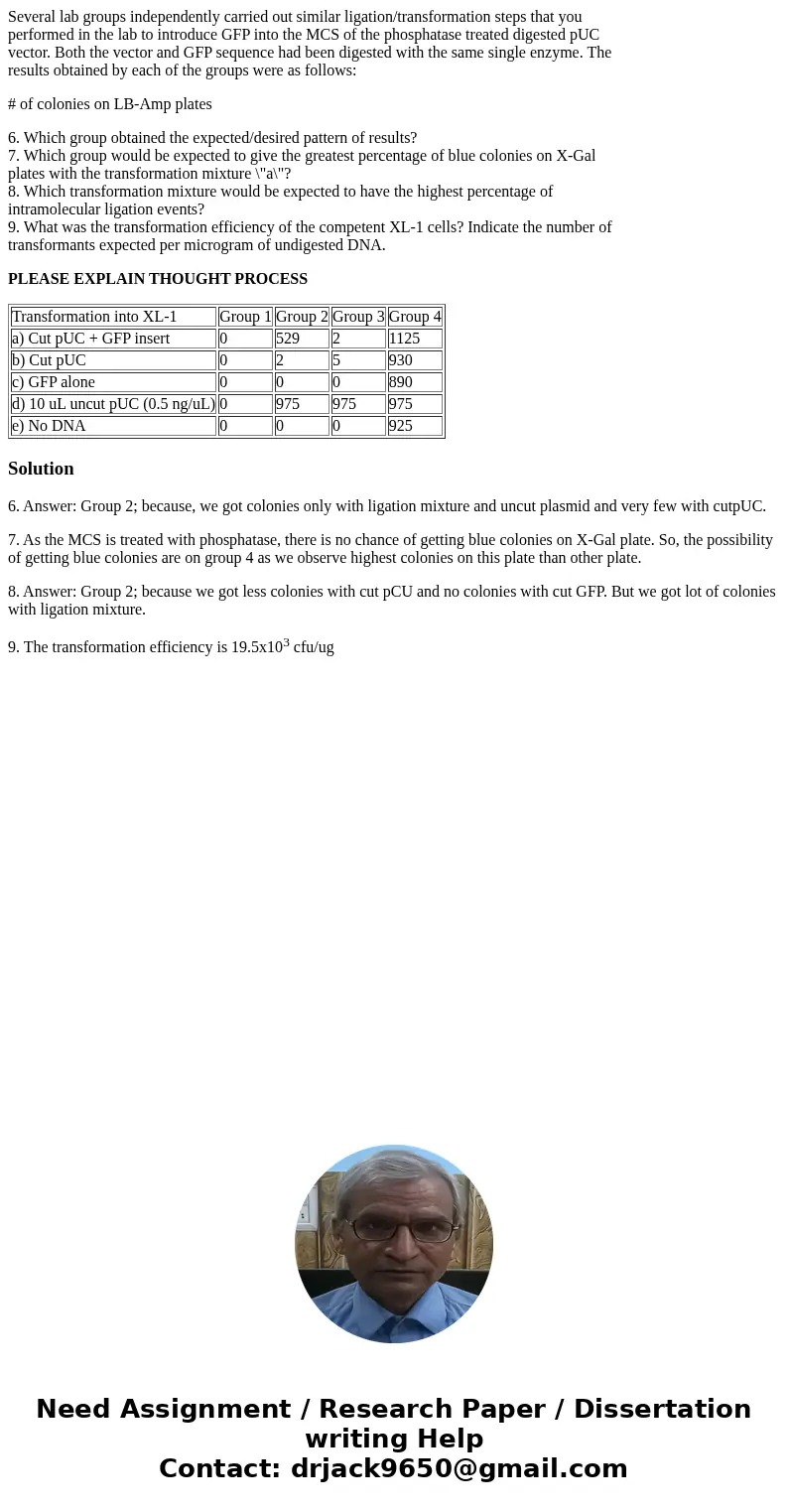Several lab groups independently carried out similar ligatio
Several lab groups independently carried out similar ligation/transformation steps that you
performed in the lab to introduce GFP into the MCS of the phosphatase treated digested pUC
vector. Both the vector and GFP sequence had been digested with the same single enzyme. The
results obtained by each of the groups were as follows:
# of colonies on LB-Amp plates
6. Which group obtained the expected/desired pattern of results?
7. Which group would be expected to give the greatest percentage of blue colonies on X-Gal
plates with the transformation mixture \"a\"?
8. Which transformation mixture would be expected to have the highest percentage of
intramolecular ligation events?
9. What was the transformation efficiency of the competent XL-1 cells? Indicate the number of
transformants expected per microgram of undigested DNA.
PLEASE EXPLAIN THOUGHT PROCESS
| Transformation into XL-1 | Group 1 | Group 2 | Group 3 | Group 4 |
| a) Cut pUC + GFP insert | 0 | 529 | 2 | 1125 |
| b) Cut pUC | 0 | 2 | 5 | 930 |
| c) GFP alone | 0 | 0 | 0 | 890 |
| d) 10 uL uncut pUC (0.5 ng/uL) | 0 | 975 | 975 | 975 |
| e) No DNA | 0 | 0 | 0 | 925 |
Solution
6. Answer: Group 2; because, we got colonies only with ligation mixture and uncut plasmid and very few with cutpUC.
7. As the MCS is treated with phosphatase, there is no chance of getting blue colonies on X-Gal plate. So, the possibility of getting blue colonies are on group 4 as we observe highest colonies on this plate than other plate.
8. Answer: Group 2; because we got less colonies with cut pCU and no colonies with cut GFP. But we got lot of colonies with ligation mixture.
9. The transformation efficiency is 19.5x103 cfu/ug

 Homework Sourse
Homework Sourse